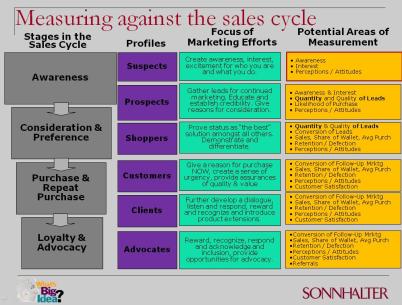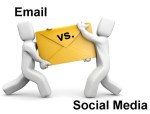by tradesmeninsights | May 27, 2010 | Marketing Tips, Traditional Marketing
E-mails are still a good “go to” strategy whether you’re a B-to-B or B-to-C marketer. When going after the professional tradesmen or contractor, we have found that timing is probably one of the most critical components to a successful campaign.
We have found that the time of day is usually a key factor in the open rate. We usually either have them sent at 6-7 in the morning or after 5 as these are the times contractors usually have time to spend on their e-mails.
Silverpop‘s recent poll ranked tactics that both groups thought to be important.

B-to-B marketers were highly focused on moving prospects through the sales pipeline, while B-to-C respondents were looking to increase customer loyalty.

What are some of the tactics that you find get better results?
Other posts you might find interesting:
Will E-mail Be Replaced by Social Media?
E-mail and Social Media are Tools B-to-B Marketers Plan on Using More of in 2010
E-mail Marketing for Industrial Markets: Common Mistakes to Avoid
E-mail: Still an Effective Method to Reach the Professional Tradesmen
by tradesmeninsights | May 5, 2010 | Marketing Tips, Traditional Marketing
 All of us are getting inundated with e-mail, but studies show it’s still one of the best ways to reach out to people.
All of us are getting inundated with e-mail, but studies show it’s still one of the best ways to reach out to people.
It does have its challenges with spam filters and internal firewalls. But I’ve found that by using some of the techniques for writing blog posts have come in handy in writing e-mails.
So here are some tips on how to more effectively use this tool:
- Subject line – This is probably the most important part of the message. Make sure you grab their attention.
- Preview pane – Preview panes shows a few lines of content. It’s important that you deliver on the subject line quickly. Let them know what’s in it for them if they continue reading.
- Make it scannable – I learned this from doing posts here on the blog. Use short paragraphs, highlight important parts of the message. The average time spent on an e-mail is somewhere between 2-5 seconds, so you don’t have much time to stop them.
- Go for quality not quantity – Put out fewer e-mails, but make them more impactful. If I know when I get an e-mail from you I usually get some good info, I’ll open it.
- Timing – It’s all about the timing. I’ve found that Tuesday, Wednesday and Thursday are the best for me. You need to test out what might be the best time to hit your audience. For contractors, the best time I’ve found is between 6:30 – 7 in the morning or later in the evening about that same time.
Those are some tips on how I try to make e-mails more effective.
What are some things you do?
If you like this post, please pass it on.
Other posts you might find interesting:
Will e-mail be replaced by social media?
E-mail and Social media are tools B to B marketers plan on using more of in 2010
E-mail marketing for Industrial Markets: Common mistakes to avoid

by tradesmeninsights | Dec 17, 2009 | Marketing Trends, Social Marketing, Traditional Marketing
As we all look forward to 2010 in our planning processes, we’re all looking for ways to generate exposure and ultimately leads that turn into sales. Most marketing budgets will still be tight in 2010, and marketers are looking for ways to get the best bang for the buck.
According to eMarketer.com, 75% of small businesses (under 500 employees) plan to increase their e-mail marketing in 2010. 70% will put more dollars toward social media according to Vertical Response data.

B-to-B marketers are using these tools because they are inexpensive and generate quick measurable data. Campaigner and Hurwitz & Associates studied small businesses under 20 employees and found 28% of those that used e-mail marketing considered it inexpensive and an effective way to reach new customers.

Smart marketers will include both e-mail and social into their 2010 plan. That and some search engine marketing and you’ll have a winning combination.
I’d like to hear from you on whether e-mail and social are in your 2010 plan.

by tradesmeninsights | Jul 28, 2009 | Marketing Tips, Marketing Tools, Traditional Marketing
The answer is both depending on how you’re developing and nurturing prospects. Today both Drip Marketing and Closed Loop marketing are seen to be online strategies. Truth be known, these have been going on long before we had the use of the Internet tools. Effective marketing programs today should utilize both. We are fortunate to have these tools that help us monitor and measure our activities in infinite ways. Here are some suggestions on how to reach the Professional Tradesman using both Techniques:
Drip Marketing – I define this as an ongoing way to communicate and deliver product info and thought leadership to contractors and tradesmen who have identified themselves to us. It can use traditional methods like direct mail with things as simple as a series of postcards or other mailers to touch folks on a regular basis (monthly, weekly or daily). With the advent of the Internet we can add links to our e-mails to landing pages that can expand on content, offer incentives and interact with tradesmen.I’d suggest that to be effective, run and monitor these campaigns using an automated system.These automated systems will help you create and deliver messages and gives you the metrics to monitor open rates,click throughs and opt outs.They will also help reduce spam complaints and increase delivery.
Closed Loop Marketing – I define this as a more complex system that involves marketing working closely with sales to work a contractor through the sales process. It utilizes many if not most elements that are in a Drip program but goes beyond just delivering information based on a previous actions and their place in the buying cycle. Marketers literally “close the loop” by working with sales to provide the right info at the right time based on contractors responses. “Close the Loop” marketing provides feedback through reporting on each step and can adjust both timing and content based on feedback.

Both Drip and Closed Loop are great tools for B-to-B marketers. Deciding on which use or in what combination will be dependent on your own circumstances. If you’re trying to decide where to get started you might want to read a free white paper from DemandGen – calculating the return on lead nurturing.

by tradesmeninsights | Apr 20, 2009 | Marketing Tips, Marketing Trends, Social Marketing
 E-mails have been around and we’ve used it to asked tradesmen to forward on valuable information to their peers about our products or programs. It’s not easy and isn’t reliable because you’re asking the customer to do a lot of work on your behalf. E-mail is also a one-way street in that you don’t make it easy to respond back to the original source.
E-mails have been around and we’ve used it to asked tradesmen to forward on valuable information to their peers about our products or programs. It’s not easy and isn’t reliable because you’re asking the customer to do a lot of work on your behalf. E-mail is also a one-way street in that you don’t make it easy to respond back to the original source.
Joint research by Ball State University,Exact Target and e-mail networking association reveals that more than 46% of e-mail marketing campaigns this year will use social media and e-mail in tandem compared to just 13% in 2008.
E-mail combined with social media offerings like Linked-in, Facebook and Twitter allow you to get your message out quicker to more people and give them an easy way to reply. In other words you’re engaging them and that’s why social media is so important. By clicking a link, you are sharing content with influencers that you might not have had reached.
I read a post recently from Karen Bannan, Combining e-mail with social media,where she shared thoughts from Ryan Duetsch from StrongMail Systems on ways to get the most out of your efforts.
- Use ESPs. Most major ESPs (like StrongMail and Sliverpop) and e-mail providers are making it easy to send e-mails directly to your Facebook page for example.
- Create your own social network. Create your own community. If you’re targeting professional plumbers for example, the discussions that go on provide great resources for e-newsletters. You know what the hot topics are and can address them as an expert.
- Add opt-in links to all your marketing collateral. For example, if you post a new video on Facebook, make sure it contains a link at the end so viewers can opt-in. Once it’s shared, you’ll be reaching thousands of prospects making sure you give them a way to ask for more information.
- Use your status to publicize your e-mail newsletter. Facebook, Linkedin and Twitter give users the option to publish information. Take advantage of this and even send out a reminder before you actually send out the e-mail that it’s coming.
- Change your layout. If you’re sending people from a social media site to your web site, make sure your opt-in links are very visible.
- Use search functions. Follow your company and brand names on Facebook, Linkedin and Twitter to gain market knowledge. Twitter search lets you follow everything that’s mentioned about your company.
- Be a Joiner. You need to get involved. You want to become a trusted source, and in order to do that, you need to join Linkedin groups, respond to questions and get involved in discussions.








 E-mails have been around and we’ve used it to asked tradesmen to forward on valuable information to their peers about our products or programs. It’s not easy and isn’t reliable because you’re asking the customer to do a lot of work on your behalf. E-mail is also a one-way street in that you don’t make it easy to respond back to the original source.
E-mails have been around and we’ve used it to asked tradesmen to forward on valuable information to their peers about our products or programs. It’s not easy and isn’t reliable because you’re asking the customer to do a lot of work on your behalf. E-mail is also a one-way street in that you don’t make it easy to respond back to the original source.